Sir Bernard Spilsbury, Professional Expert
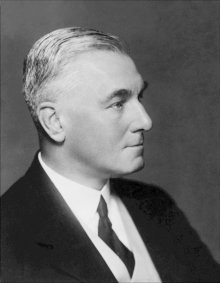
In the early part of the 20th century, forensic science was beginning to come into its own. The field had a rocky start, with a combination of initial over-confidence and sloppy practises eroding public confidence in the ability of scientists to determine objectively the truth. Not helping this was the adversarial nature of the proceedings – expert witnesses were called either for the defence or the prosecution, and seeing these contradictory interpretations of what people instinctively thought should be objective facts eroded their confidence in the profession as a whole. What they needed was someone to confidently tell them what the truth was. Someone who they could believe in. And in Sir Bernard Spilsbury, for better or for worse, they found it.
Spilsbury always had the manner of a gentleman, but in fact he was born in 1877 in Leamington Spa [1] above a chemist’s shop. His father was a social climber – his grandfather had been an innkeeper, but he had the much grander title of Chemist, or as he spelt it on his sign, “Chymist”. He had one goal in mind for his son – to achieve what he had not been able to, and to attain the coveted title of “Doctor”. To that extent he sent Bernard to the best schools, and furnished him with a handsome allowance. He was an indifferent student, who generally rated himself far better than his teachers did, and his grades were never that spectacular, but his persistence, and his father’s funds enabling him to continue to study and to take low-paying but prestigious posts, would pay off. He graduated from Oxford with a second-class degree in Natural Sciences, enough to secure him a place studying medicine at the University of London, and to enable him to get a post as an intern at St Mary’s Hospital in Paddington. It was the latter that would prove to be the making of him.
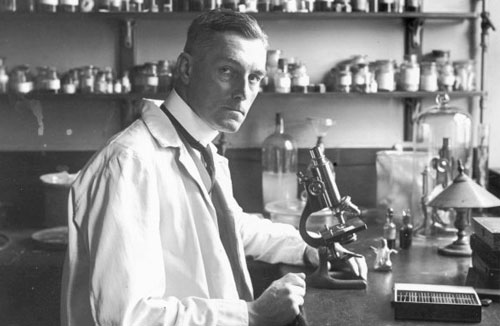
St Mary’s had been established in 1845, and soon became renowned as one of the best research hospitals in the world. [2] Spilsbury became the assistant to a team of men who were determined to restore respectability to the forensic profession. Of these, one became Spilsbury’s personal mentor, the pathologist Augustus Joseph Pepper. Spilsbury found that he had an aptitude for the work. He had no compunction about performing postmortems, which a lot of the doctors disliked, and so he gained a lot of hands-on experience. The team at St Mary’s had a good working relationship with the Home Office, who administered the Metropolitan police, and were frequently called to give evidence on their behalf in court. As Pepper grew older, Spilsbury began to take on this role, and it was his public involvement in three spectacular cases between 1910 and 1915 that would establish him in the eyes of the public as the ultimate authority on forensic science.
In 1910, a music hall singer named Cora Crippen went missing. Police originally thought that she had simply gone back to America as her husband said that she had, but his demeanour raised some suspicion in the Chief Inspector who interviewed him, a man named Walter Dew, and when he returned for a follow up interview he found the Crippen home deserted. Upon searching it they discovered a heavily decomposed corpse under the cellar, and Pepper was sent for to examine it. He brought with him his assistant, Bernard Spilsbury. They brought the remains back to the hospital, where they determined that they had been dissected by someone with a degree of medical skill. Cora’s husband fit the bill. A warrant was issued for his arrest, and he was famously spotted by the captain of a transatlantic steamer on board his ship. Telegraphs went back and forth, and when Doctor Crippen stepped off the boat in New York, Chief Inspector Dew was waiting at the dock to arrest him. In court, the trial came to hinge around whether the body in the cellar was truly Cora’s, and here it was that Spilsbury came to the fore. The identification hinged around a scar that had been found on a piece of flesh – a flimsy enough piece, but Spilsbury’s confident declaration, calm manner in court and air of complete professionalism were enough to convince the jury. They returned a verdict of guilty, and both Spilsbury and Crippen made their way into the history books. [3]
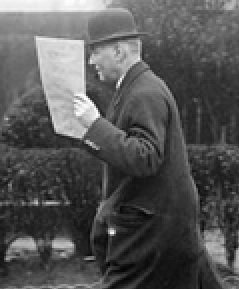
Spilsbury’s demeanour in court impressed the Department of Public Prosecutions, and the following year they had him give evidence again in the case of Frederick Henry Seddon, a man who had persuaded an old lady to make a will in his favour and then poisoned her. Again, Spilsbury performed well in court. He became a regular witness in cases, but it was the case of the Brides in the Bath that would truly make him a household name. In 1915, the police arrested George Joseph Smith, a 43-year old ex-convict, on suspicion of murder. The police had received a letter from Joseph Crossley, a friend of the family of Smith’s wife Alice, who had always suspected Smith of foul play in her death (by drowning in the bath). He had seen the reports of the death of a woman named Margaret Lloyd, and had noticed a lot of similarities to Alice’s death. The police had investigated, and discovered that Margaret’s husband was actually Smith under a false name. Spilsbury was called in to assist the police, and he was at first stumped. The corpses showed no signs of violence, and gave the exact impression of drowning while unconscious. The publicity led to discovery of a third victim, named Bessie Munday, who Smith had married under another false name. Like the others, she had drowned in the bath. The repeated pattern meant that the prosecution would have an airtight case against Smith – but only if they could show that the deaths were murders. Spilsbury realised that the common factor was the length of the bath, and the similar posture in which the women were found – on their backs with their feet out of the water. He theorised that a sudden jerk on the feet, pulling the women’s heads underwater, would cause them to reflexively inhale water and pass out. His experiment to prove this involved a championship swimmer, and was so successful that it took Spilsbury and another doctor half an hour to revive her. Spilsbury’s discovery of how Smith had committed these crimes sealed his fate, and it took a jury only twenty minutes to convict him.
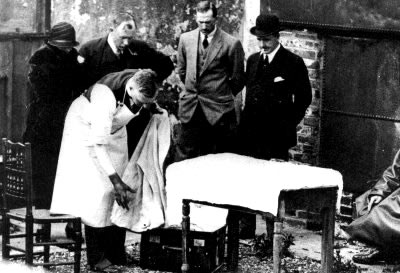
The media went wild over Spilsbury, dubbing him a “real life Sherlock Holmes”. Spilsbury went on to earn a knighthood after his testimony in the Armstrong case, [4] and national renown with his conduct in the Mahon case. [5] The latter also led to his biggest contribution to the field of criminology. As the police gathered up the remains of Emily Kaye, the victim, Spilsbury was shocked to see their complete lack of protective gear, leaving them open to infection. After the case had concluded he approached the Home Office and helped develop the Murder Bag, a portable kit for police officers that included not just rubber gloves, but also a tape measure, sample bags, and other tools to help them record evidence. The training to go with it was the first time that police officers had received any training in how to handle a crime scene beyond “don’t touch anything”. The Murder Bag remained in use until CSI specialists were introduced to the force. This raised his stock a great deal with a Home Office that already regarded him highly for his performance in court. Spilsbury, they realised, was a case-winner. Naturally, the temptation to use Spilsbury’s reputation to win doubtful cases was a strong one. It was in the case of John Norman Holmes Thorne that Spilsbury was first used to bolster a doubtful case, and achieve what some still think was a miscarriage of justice.
Norman Thorne was a former RAF mechanic who had become a chicken farmer in Sussex. In December 1924, after his former fiancée Elsie Cameron (who he had been trying to cut contact with) went missing and witnesses placed her at his farm, he was arrested. He confessed to having buried her body on his farm, but claimed that she had killed herself and he had hidden the body in panic. The police did not believe him, and charged him with murder. From the start, the case was riddled with irregularities. When Elsie’s body was exhumed, Spilsbury was the only qualified medical professional present, and after he had completed his examination the remains were not preserved for any later examination. Instead, the defence had to rely on an examination of the exhumed body after it had spent four weeks in an improperly sealed coffin, and was severely decomposed.
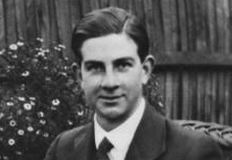
As a result Spilsbury’s assertion that there was no sign of suicide, and that the head showed signs of assault, was hard for them to refute. Spilsbury’s evidence at the trial was characteristically definite, but contradicted several earlier statements that he had made at the inquest. Still, he was not challenged on this, and the judge’s summing up was definitively pro-Spilsbury. The argument that the highly technical arguments between him and the defence experts were beyond the understanding of the jury, who had instead put their faith in Sir Bernard’s reputation, were brushed aside at appeal. Thorne, who maintained his innocence to the end (and whose letters to his family were blocked by the authorities after his father started having them published), summed it up in his final words to his father before he was hanged. “Never mind, Dad, don’t worry. I am a martyr to Spilsburyism.”
The controversy over the case was kept largely out of the public view, but it made Spilsbury profoundly unpopular in his profession. Judges, lawyers and writers on legal matters all began to discuss in worried tones the undue influence that Spilsbury had on the legal process. He didn’t care – it also made him the darling of the Establishment and the media. [6] This was enhanced when he was called in to testify for the prosecution in Sydney Fox’s trial for murdering his mother. Fox was a member of London’s “homosexual underworld”, becoming the lover of influential men and then taking advantage of the illegal nature of homosexuality at the time to blackmail them for money or influence. He combined this with occasional confidence scams, in which his mother Rosie was often his accomplice. In 1929 Rosie perished in a fire in a hotel in Margate, where Sydney was also staying. The police were fairly confident that the fire had been started deliberately, and the life insurance policies that Rosie had just taken out provided enough motive for them to arrest Sydney for her murder. Again, the trial was a bit of a mess. The prosecution case was that Fox had smothered his mother with a pillow, though Spilsbury’s medical evidence veered between smothering and strangulation. It was generally agreed that Rosie had been dead before the fire would have killed her, but the defence case that this was the result of a heart attack was brushed aside by Spilsbury, despite his own notes showing that he found evidence of prior heart attacks during his post mortem. In addition, his failure to preserve the throat tissues where he claimed to find bruises so this could be verified would have seen the case thrown out today. The prosecution was headed by the Attorney-General, Sir William Jowitt, who was determined to see Fox hang. Fox was initially confident that his former lovers (which included Earl Beauchamp, a friend of King George V) would protect him, and the judge’s summing up, which was mostly favourable to Fox on the grounds of the shaky prosecution case, seemed to bear that out. However to the public’s surprise, and Fox’s horror, the jury returned a guilty verdict. Fox did not appeal the verdict (rumour has it that he was informed in prison that his “powerful friends” actually wanted him dead and gone, and that any appeal would be squashed), and he was hanged on the 8th April, 1930. Writing in the 1950s, Sir Sydney Smith [7], who believed in Fox’s innocence and who thought that Rosie killed herself in order to let her son claim the life insurance, wrote: “Perhaps Spilsbury did not fully realise that fame brings responsibility as well as honour. I do not think the jury would have returned the verdict if the evidence had been given by anyone else than Spilsbury.”

Spilsbury continued to serve as both a pathologist and expert witness up until and through World War II, performing post mortems on Blitz victims and victims of opportunistic criminals such as Gordon Cummins, the “Blackout Ripper”. He served as an advisor on Operation Mincemeat. [8] However the war years were tragic for Spilsbury, as one of his three sons was killed in the Blitz, while another died of TB just after the war. In addition, his own declining health left him severely depressed (he had arthritis, and had suffered at least one stroke that left his right hand partially paralysed), and in 1947 he turned on the gas taps in his laboratory at University College London and died. For forty years, he had been the face of forensic medicine to the British public. He had been a master at courting publicity while appearing to avoid it, and while his early work was rigorous and impressive, in the end he fell victim to believing in his own legend, and in his own infallibility. Sir Bernard’s word was enough to see a man hanged, but he was careless with that word, and innocent men may have suffered as a result. Perhaps the good Sir Bernard accomplished outweighed the bad, but it does not excuse it. The writer Richard Gordon put it best when he said that Spilsbury “could achieve single-handed all the legal consequences of a homicide – arrest, prosecution, conviction, and final post-mortem – requiring only the brief assistance of the hangman”. It would take a remarkable man to handle that level of power, and in the end Spilsbury was not that man.
I would like to thank Dr. Stephen Flanders whose course on “Edwardian CSI” was the inspiration for this article.
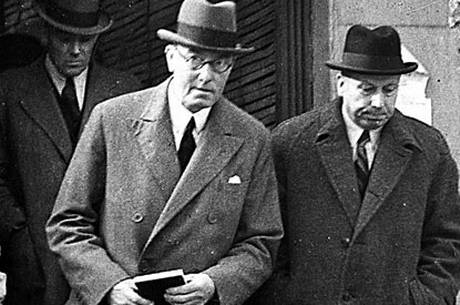
[1] Only a few miles away from the two year old Aleister Crowley.
[2] Both heroin and penicillin were discovered there, the latter during Spilsbury’s tenure. St Mary’s is a highly prestigious hospital even today, as evidenced by the fact that Prince George, child of William and Kate, was born there a few years ago.
[3] The identification of the corpse is still hotly debated today, with some claiming it was actually the result of a botched back-alley abortion performed by Crippen. Of course, this would still have made him guilty of murder by the laws of the day.
[4] Also known as the Dandelion Killer, Herbert Rowse Armstrong poisoned his wife without arousing suspicion, but was caught when he attempted to poison a professional rival.
[5] Patrick Herbert Mahon was an adulterer who murdered his pregnant lover, then attempted to dispose of the corpse by dismembering it and rendering it down. Spilsbury’s reconstruction of the body and discovery of her pregnancy, along with showing that the knife used for the butchery was one Mahon had bought three days before the murder, was enough to see Mahon hanged.
[6] The extent of Spilsbury’s relationship with the media becomes obvious when you discover that he had a long-term affair with his assistant Hilda Bainbridge, and several reporters knew that it was going on, but the allure of the big scandal was thoroughly quashed by Spilsbury’s friendship (and membership of several societies) with their editors.
[7] Regius Professor of Forensic Medicine at Edinburgh University, and the man who quite literally wrote the book on modern forensic science with the Textbook of Forensic Medicine in 1925.
[8] The Allied misinformation operation where they placed false plans in the pockets of a corpse and had it wash ashore on an Axis-controlled beach, in order to convince the enemy that they planned to invade Greece rather than their actual target of Italy. The operation became the subject of the 1953 book and 1956 film The Man Who Never Was.
